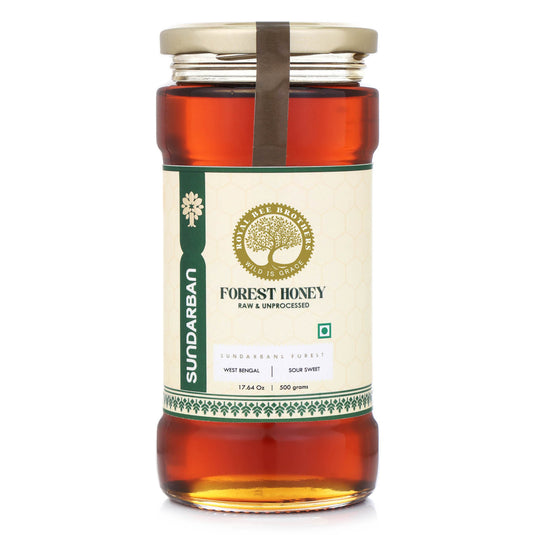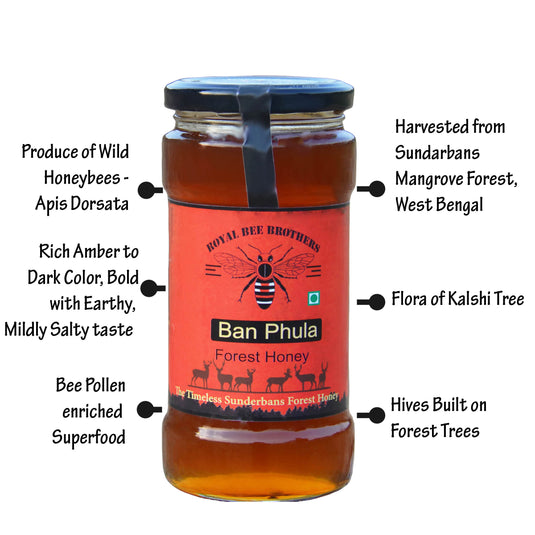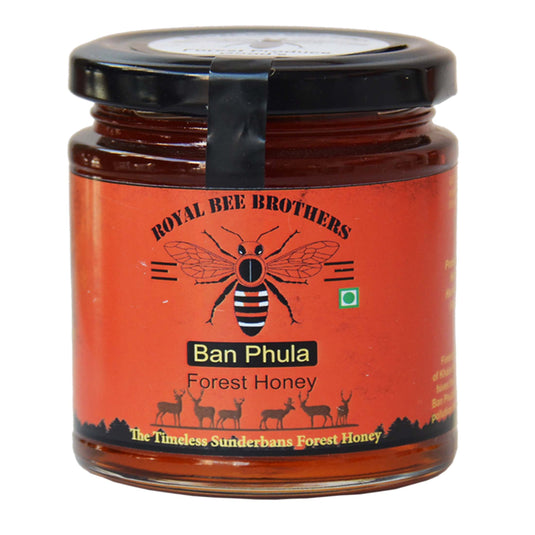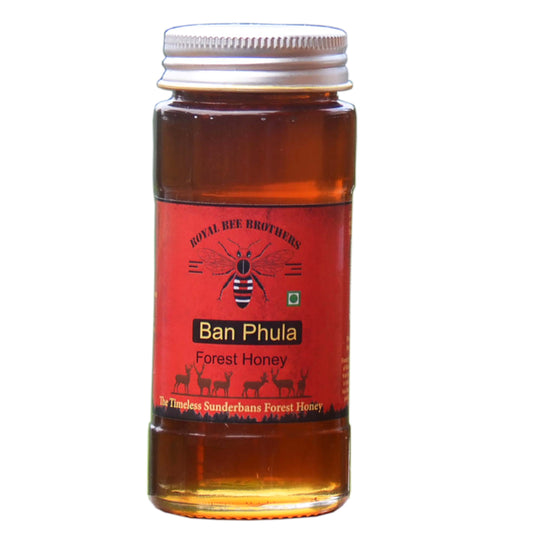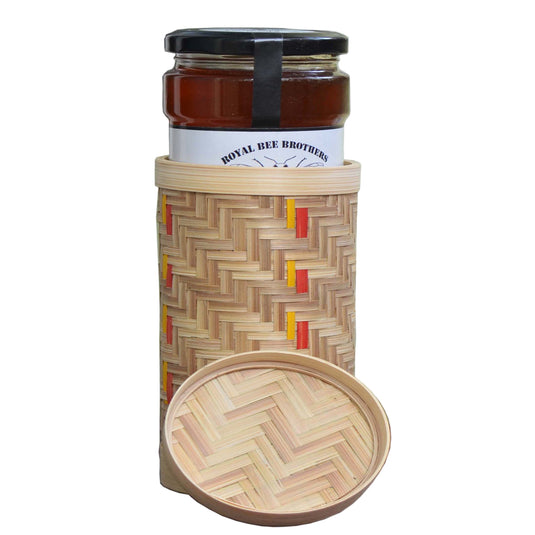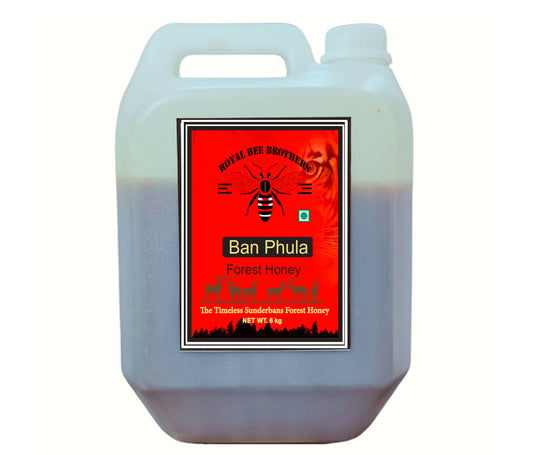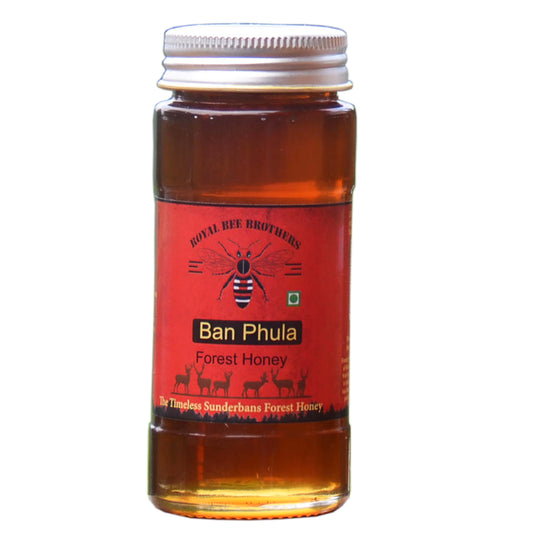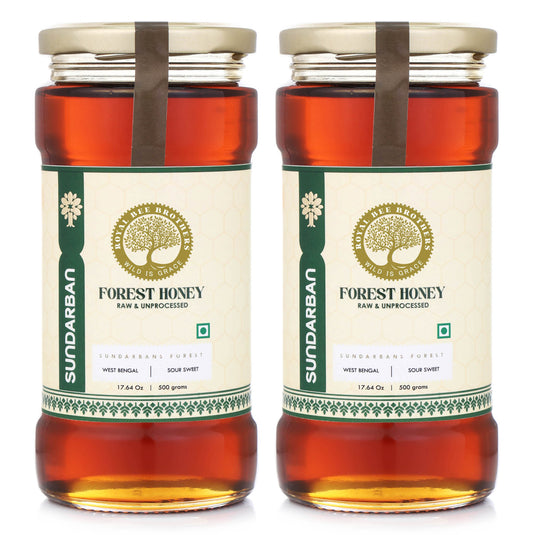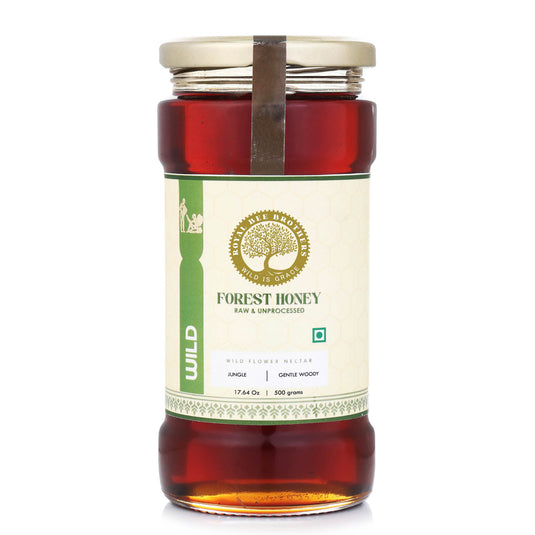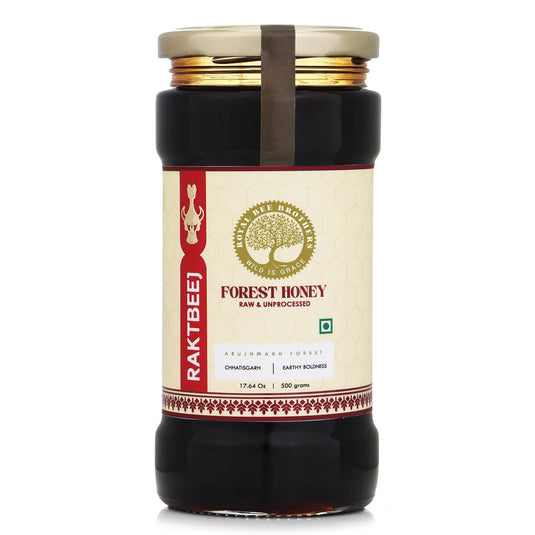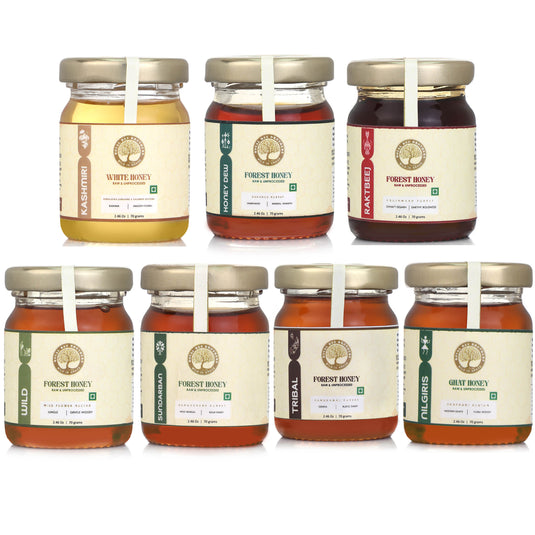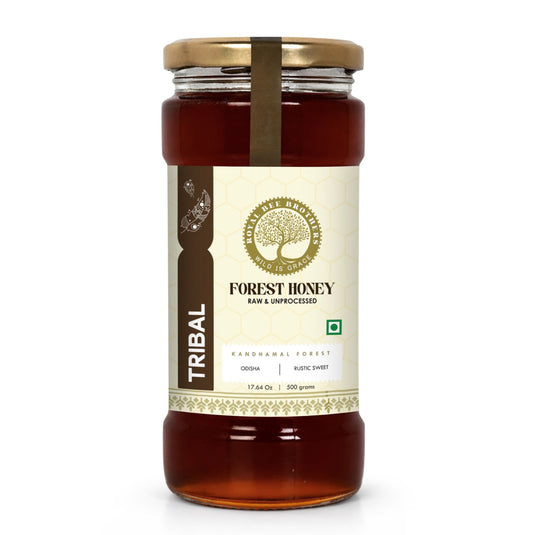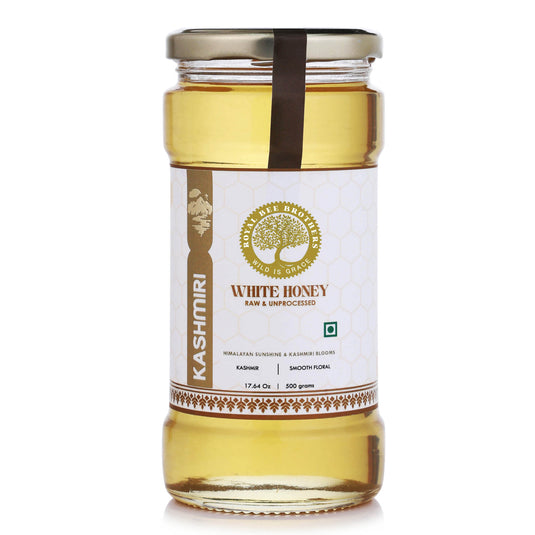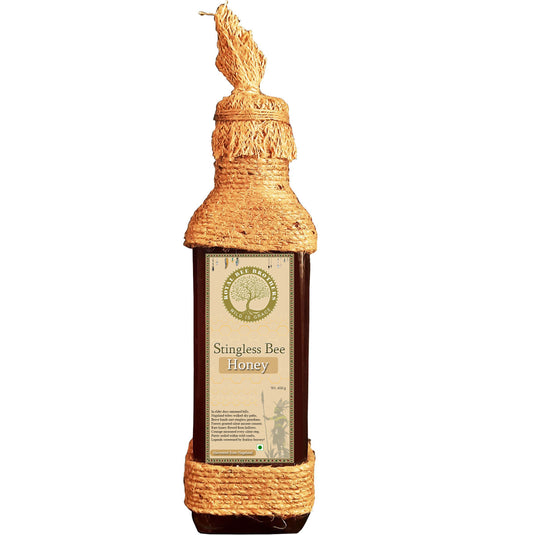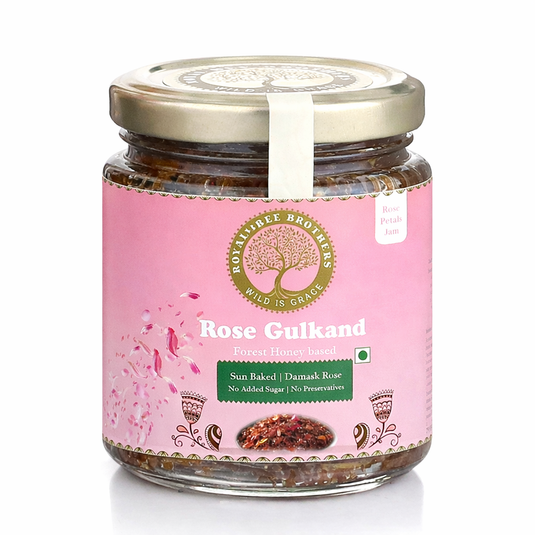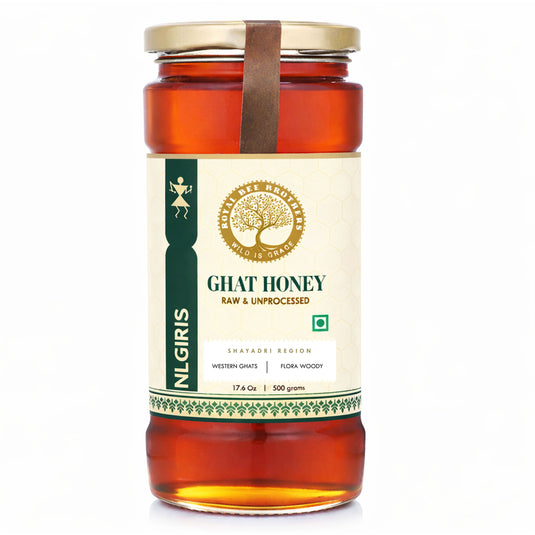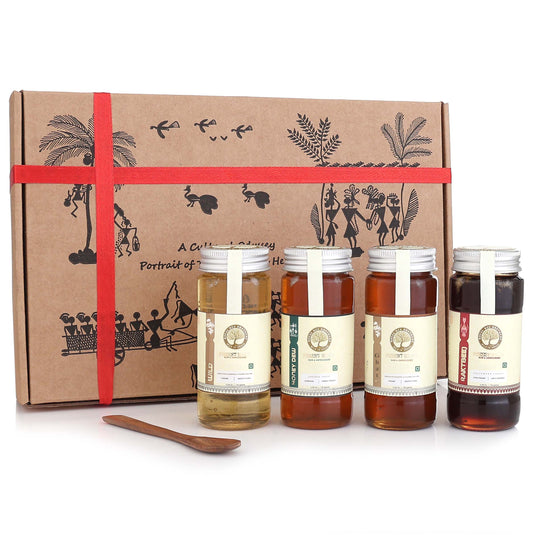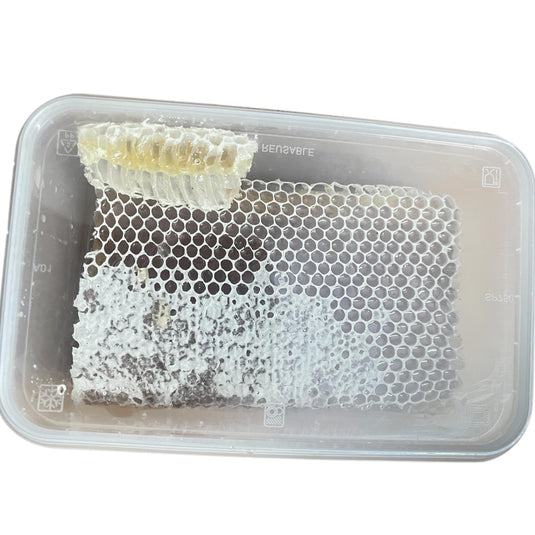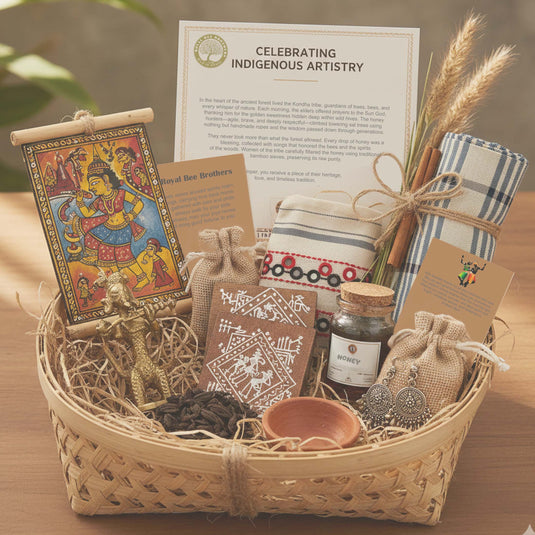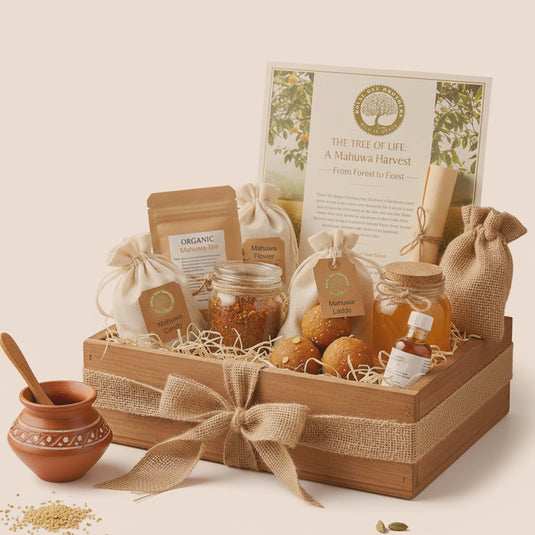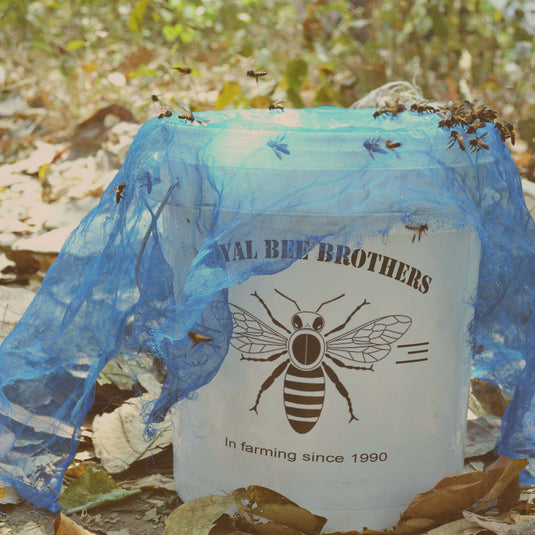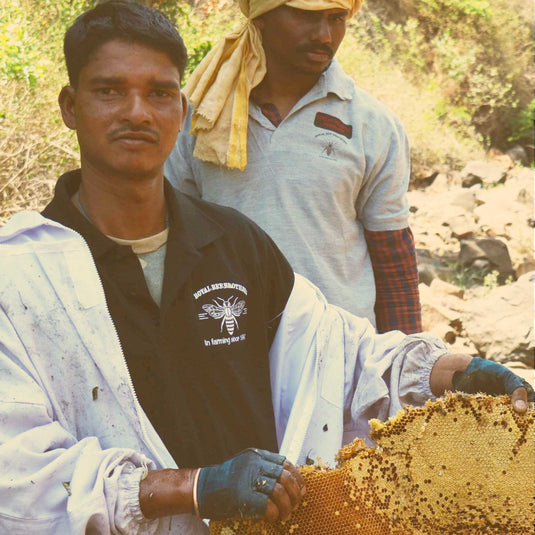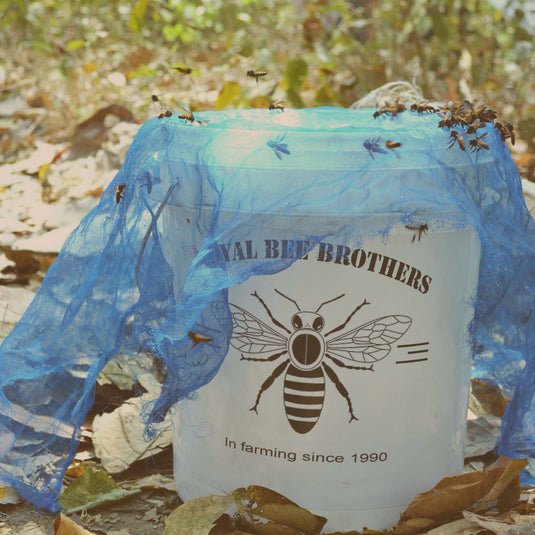Sundarbans Mangrove Forest Honey, Nectar of Kalsi Flora, Harvested from Sundarbans Forest (WB)
Rs. 899.00
Rs. 899.00
Rs. 1,250.00
Couldn't load pickup availability
Sundarbans Forest Honey is a rare, wild honey from Apis Dorsata hives high in the mangrove forests. Collected from the nectar of diverse wild flora, including Kalshi trees, it is unheated, unprocessed, and unfiltered, preserving its natural enzymes, pollen, and nutrients. With a rich amber color, slightly fermented and less sweet taste, it evokes the essence of mangrove flora, offering a pure, authentic, and nutrient-packed honey experience.
With its unique blend of nutrients and medicinal properties, Sundarbans Mangrove Forest honey offers a myriad of health benefits, from boosting immunity to aiding in wound healing. Sundarbans Mangrove Forest honey is not merely a culinary delight; it is a symbol of the intricate relationship between humans and the natural world, highlighting the importance of preserving our planet's precious ecosystems for generations to come. Its antibacterial and antimicrobial properties make it an effective remedy for soothing sore throats, treating coughs, and healing wounds. Additionally, it's ability to boost immunity and reduce inflammation further enhances its medicinal value. Beyond its health benefits, honey's natural sweetness and versatility make it a popular ingredient in culinary creations, adding depth of flavor to dishes and beverages.
Honey can be used as a natural sweetener in place of sugar to help reduce overall calorie intake. Starting the day with a warm glass of water mixed with honey and lemon can help boost metabolism and support weight loss efforts. Honey adds a natural sweetness and helps emulsify homemade salad dressings. Combine honey with olive oil, mustard, vinegar, and herbs to create a flavorful and healthy dressing for your salads. Honey can be used to sweeten teas, smoothies, and other beverages. Unlike refined sugar, honey provides additional nutrients and can help soothe the throat, making it a great addition to herbal teas. Replace sugar with honey in baking recipes for cakes, cookies, and breads. Honey adds moisture and a distinct flavor to baked goods. It can also be used in marinades and glazes for meats and vegetables, enhancing the taste and texture of dishes. Honey's antibacterial and moisturizing properties make it an excellent ingredient for skin care. It can be applied directly to the skin as a mask or mixed with other natural ingredients like yogurt or oatmeal for a nourishing and soothing treatment. A spoonful of honey can help alleviate symptoms of coughs and colds. Its soothing effect can reduce throat irritation, and its antimicrobial properties can help fight infections. Mixing honey with warm water, lemon, and ginger can provide additional relief and support the immune system.
Overview

Reviews
Explore Sundarbans Forest Honey
What is the origin of Ban Phula Forest Honey?
Ban Phula means Flower of Forest, this Sundarbans honey is harvested from Mangrove Sundarbans Forest of West Bengal.
How do you verify that this Ban Phula - Sundarbans Forest Honey is pure?
This honey is tested in NABL certified lab, and we are providing test report with each bottle.
Key Analysis are:
- Adulteration Analysis
- Micro-Biological Analysis
- Physio-Chemical Analysis
- Nutritional Analysis
- Chemical Analysis
Through standard tests like Fiehe’s test, Sucrose content check (<5%), HMF levels, and pollen analysis, which confirm it’s raw and unprocessed.
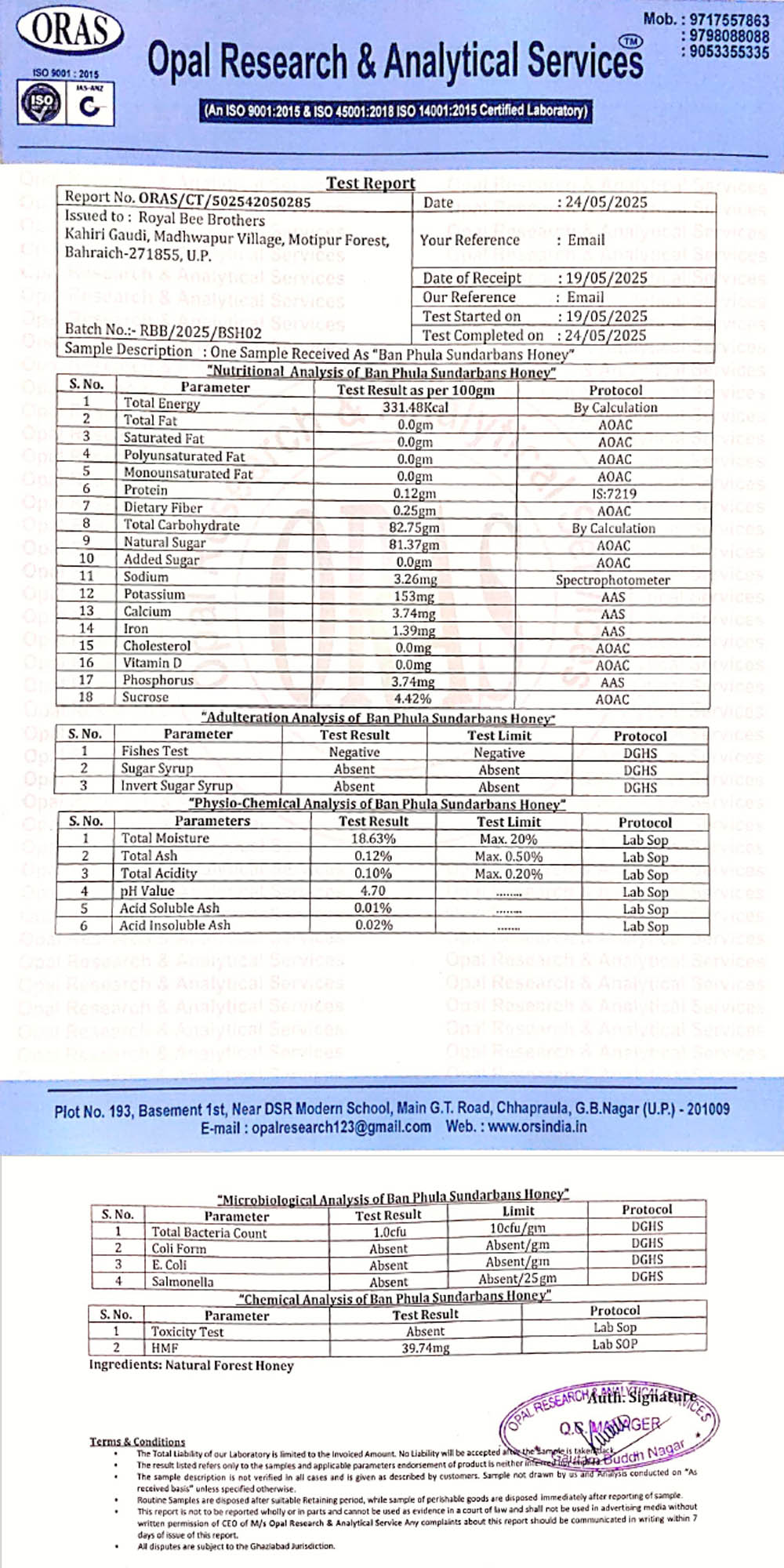
Key Analysis are:
- Adulteration Analysis
- Micro-Biological Analysis
- Physio-Chemical Analysis
- Nutritional Analysis
- Chemical Analysis
Through standard tests like Fiehe’s test, Sucrose content check (<5%), HMF levels, and pollen analysis, which confirm it’s raw and unprocessed.

What flowers and plants do the bees gather nectar from in this honey?
Kalshi tree is a key mangrove species in the Sundarbans forest. Its small, nectar-rich white flowers attract wild honeybees, especially Apis dorsata. Blooming in spring, Kalshi plays a key role in the Sundarbans Forest honey production.
Which species of honeybees produce Sundarbans Forest Honey?
Sundarbans forest is home of wild honeybee Apis- dorsata, known for producing unique, nutrient-rich honey.
Is it really organic?
Yes, because the bees forage in deep forests untouched by pesticides or fertilizers, ensuring a naturally pure and chemical-free product.
Why this Sundarbans Forest honey considered rare?
Because it is collected from deep forest zones Sundarbans mangrove belt, where wild bees thrive on untouched floral diversity—far away from commercial agriculture.
In what ways is Sundarbans Forest Honey unique compared to commercial honey?
Raw and Unprocessed:
Sundarbans Forest Honey is raw, unprocessed, unheated, and minimally filtered. This preserves the natural pollen content and beneficial enzymes that support overall health whereas mostly commercial honey is pasteurized, filtered, and processed, which removes beneficial enzymes and pollen
Sourced from Indigenous Wild Honeybees:
It is produced by native Indian wild honeybees (Apis dorsata), unlike most commercial honey which comes from domesticated Italian honeybees (Apis mellifera).
Collected from Deep Forests, Not Farmlands:
Wild honeybees build their hives high in trees deep inside the forest and collect nectar from a variety of wild forest flowers. In contrast, domesticated bees are kept in boxes near crop fields and primarily gather nectar from pesticide-treated crops—potentially introducing chemical residues into the honey.
Free from Pesticide Contamination:
Since the wild bees forage in untouched forest areas, the honey is less likely to contain pesticides or agricultural chemicals, making it a more natural and safer choice.
Naturally Varies in Taste, Color, and Texture:
The flavor, aroma, color, and texture of Deep Forest Honey naturally vary with the changing forest flora across seasons. In comparison, commercial honeys are often blended to maintain a uniform appearance and taste.
Sundarbans Forest Honey is raw, unprocessed, unheated, and minimally filtered. This preserves the natural pollen content and beneficial enzymes that support overall health whereas mostly commercial honey is pasteurized, filtered, and processed, which removes beneficial enzymes and pollen
Sourced from Indigenous Wild Honeybees:
It is produced by native Indian wild honeybees (Apis dorsata), unlike most commercial honey which comes from domesticated Italian honeybees (Apis mellifera).
Collected from Deep Forests, Not Farmlands:
Wild honeybees build their hives high in trees deep inside the forest and collect nectar from a variety of wild forest flowers. In contrast, domesticated bees are kept in boxes near crop fields and primarily gather nectar from pesticide-treated crops—potentially introducing chemical residues into the honey.
Free from Pesticide Contamination:
Since the wild bees forage in untouched forest areas, the honey is less likely to contain pesticides or agricultural chemicals, making it a more natural and safer choice.
Naturally Varies in Taste, Color, and Texture:
The flavor, aroma, color, and texture of Deep Forest Honey naturally vary with the changing forest flora across seasons. In comparison, commercial honeys are often blended to maintain a uniform appearance and taste.
What is raw and unprocessed honey?
Raw and Unprocessed honey means it hasn't been pasteurized, heated or heavily filtered. It retains pollen, propolis, and enzymes, making it more beneficial for health.
How does this honey taste, and what color is it?
Ban Phula Sundarbans honey has a rich amber to dark golden color, reflecting the diverse flora of the mangrove forest. Its taste is distinctly bold with earthy, floral, and mildly salty notes—a result of the wild nectar.
Why some honey crystallizes over time?
Honey is primarily made from flower nectar and is a combination of glucose and fructose. Honeybees collect nectar from flowers and store it in their hive to make honey. Each type of flower has a different glucose-to-fructose ratio, and these ratios determine the crystallization of honey.
Honey crystallizes if the glucose content is high; similarly, honey may not crystallize if the fructose content is higher. So, crystallization depends on the types of flora the honeybees have foraged from. For example, mustard flower honey may crystallize in 7–10 days, whereas Kalsi flower honey may not crystallize.
"If Glucose / Fructose ratio is >=1 ; Honey may crystalize.
Similarly, If Glucose / Fructose ratio is < 0.9 ; Honey may not crystalize."
So why Does Honey Crystalize?
Glucose is less soluble than fructose in water, so when glucose is high, it tends to form crystals faster. Fructose is more soluble, so honey with higher fructose crystallizes slower or stays liquid longer Some of the examples of
High Crystallization Honeys:
- Mustard Honey: Glucose content is high → crystallizes quickly (within 7-10 days)
- Rapeseed (Canola) Honey: Very high glucose content → crystallizes rapidly
- Sunflower Honey: Moderate to high glucose → crystallizes relatively fast
- Clover Honey: Known for fast crystallization due to higher glucose
- Alfalfa Honey: Tends to crystallize quickly due to sugar composition
Crystallization should never be considered as a purity parameter; it is completely normal and does not mean the honey has gone bad or it is adulterated honey!
Honey crystallizes if the glucose content is high; similarly, honey may not crystallize if the fructose content is higher. So, crystallization depends on the types of flora the honeybees have foraged from. For example, mustard flower honey may crystallize in 7–10 days, whereas Kalsi flower honey may not crystallize.
"If Glucose / Fructose ratio is >=1 ; Honey may crystalize.
Similarly, If Glucose / Fructose ratio is < 0.9 ; Honey may not crystalize."
So why Does Honey Crystalize?
Glucose is less soluble than fructose in water, so when glucose is high, it tends to form crystals faster. Fructose is more soluble, so honey with higher fructose crystallizes slower or stays liquid longer Some of the examples of
High Crystallization Honeys:
- Mustard Honey: Glucose content is high → crystallizes quickly (within 7-10 days)
- Rapeseed (Canola) Honey: Very high glucose content → crystallizes rapidly
- Sunflower Honey: Moderate to high glucose → crystallizes relatively fast
- Clover Honey: Known for fast crystallization due to higher glucose
- Alfalfa Honey: Tends to crystallize quickly due to sugar composition
Crystallization should never be considered as a purity parameter; it is completely normal and does not mean the honey has gone bad or it is adulterated honey!
Does it crystallize?
Yes, like all raw honey, Sundarbans Forest honey can crystallize over time due to its natural glucose content. Crystallization is a sign of purity, not adulteration.
Is it safe to give this honey to a child under 1 year old?
As per FSSAI (Food Safety and Standards Authority of India) regulations, honey is not recommended for consumption by infants under 12 months, to prevent the risk of infant botulism.
Can diabetic patient consume honey?
Honey is a natural sweetener, but it still contains sugar in form of glucose and fructose. So, consuming any type of honey can raise blood sugar level. Diabetic people should consult the doctor before including honey in their diet.
Is this honey sourced from a third party?
No, we do not source honey from third parties. We are the Moulis of the Sundarbans, journey deep into the forests during honey season, moving from one part of the mangroves to another. This is our tradition — passed down through generations. We work hand in hand with our local and tribal communities, respecting the rhythms of the forest and the wisdom of our ancestors. Our methods are sustainable, rooted in deep respect for nature. Through this, we not only bring you pure, wild honey but also protect our way of life, support our people, and keep the bond between forest and folk alive.
What is the best way to store this honey?
Store honey in a tightly sealed container at room temperature, away from direct sunlight and moisture. Keep it in a cool, dry place—there’s no need to refrigerate, as cold temperatures can cause it to crystallize faster.
Can honey really help in weight loss?
Honey can support weight loss when consumed with warm water and lemon early morning on an empty stomach. The combination stimulates digestion, improves metabolism, and helps mobilize stored fat. Honey’s antioxidants and enzymes regulate blood sugar spikes, while warm water enhances hydration and detoxification, creating favorable conditions for calorie burning and gradual fat reduction when paired with balanced diet.
What makes it medicinally potent?
High levels of antioxidants, flavonoids, and natural enzymes—especially glucose oxidase, which helps produce hydrogen peroxide (antibacterial action).
What is its shelf life?
If stored in airtight glass containers away from moisture, it can last indefinitely—since pure honey is naturally self-preserving.








